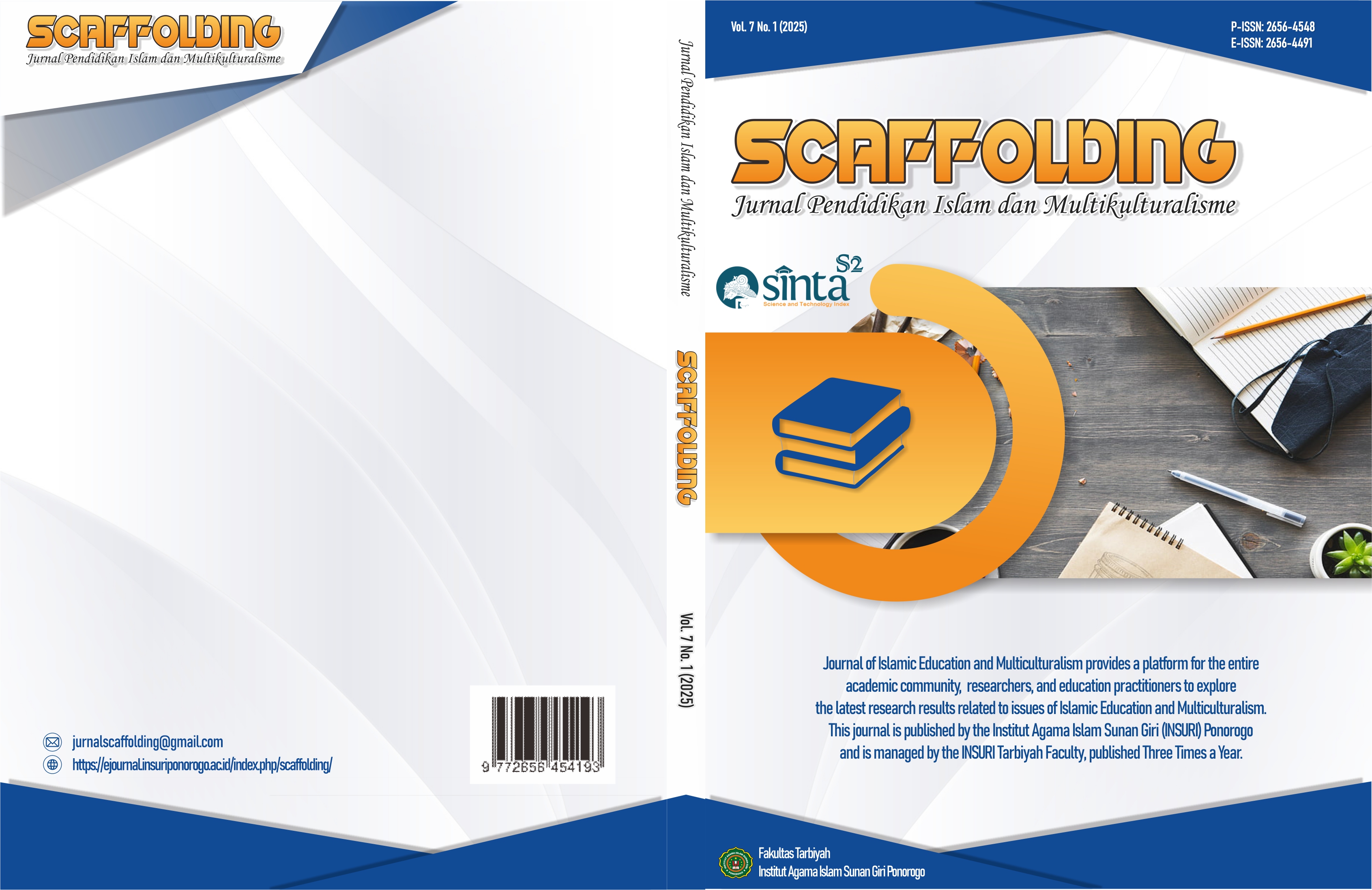Integrating Disaster Risk Reduction Principles into Pesantren Curriculum Using the Sendai Framework
DOI:
https://doi.org/10.37680/scaffolding.v7i1.7075Keywords:
Disaster Resilience, Curriculum Integration, Islamic Values, Pesantren, Sendai FrameworkAbstract
This study investigates the potential of Pesantren Darussalam Parmeraan, North Sumatra, to foster disaster resilience by integrating Sendai Framework’s disaster risk reduction (DRR) principles into its Islamic education curriculum. Situated in a forested area near a river, the pesantren faces flood and landslide risks. Employing a qualitative approach with case study, data were sourced from curriculum documents (akhlak, fiqh, tafsir), santri guidelines, activity records (gotong royong, tree planting, water management), and semi-structured interviews with the kiai, ustaz, and santri. Data were collected through document reviews and interviews, analyzed following Miles and Huberman (1994) via data reduction, data presentation, and conclusion drawing to identify DRR elements. Findings reveal traces of DRR in local practices and Islamic values (amanah, tawakkal, solidarity), aligning with Sendai’s risk understanding, governance, resilience investment, and preparedness. However, gaps such as the absence of evacuation training, fragmented risk knowledge, and limited external collaboration hinder effectiveness. Proposed modules—“Environmental Akhlak,” “Disaster Fiqh,” and ikhtiar-based simulations—integrate disaster science with spirituality, strengthening isolated community resilience. This study offers a faith-based DRR model, contributing to Sustainable Development Goals (SDG 4, 13) and global literature.
Downloads
Published
How to Cite
Issue
Section
License
Copyright (c) 2025 Suryadi Nasution, Ali Jusri Pohan , Khairurrijal Khairurrijal, Nelmi Hayati, Zuhdi Hsb, Andri Muda Nst

This work is licensed under a Creative Commons Attribution-NonCommercial 4.0 International License.
Authors who publish with this journal agree to the following terms:
Authors retain copyright and grant the journal right of first publication with the work simultaneously licensed under a Creative Commons Attribution-NonCommercial 4.0 International License that allows others to share the work with an acknowledgement of the work's authorship and initial publication in this journal.
Authors are able to enter into separate, additional contractual arrangements for the non-exclusive distribution of the journal's published version of the work (e.g., post it to an institutional repository or publish it in a book), with an acknowledgement of its initial publication in this journal.
Authors are permitted and encouraged to post their work online (e.g., in institutional repositories or on their website) prior to and during the submission process, as it can lead to productive exchanges, as well as earlier and greater citation of published work.



